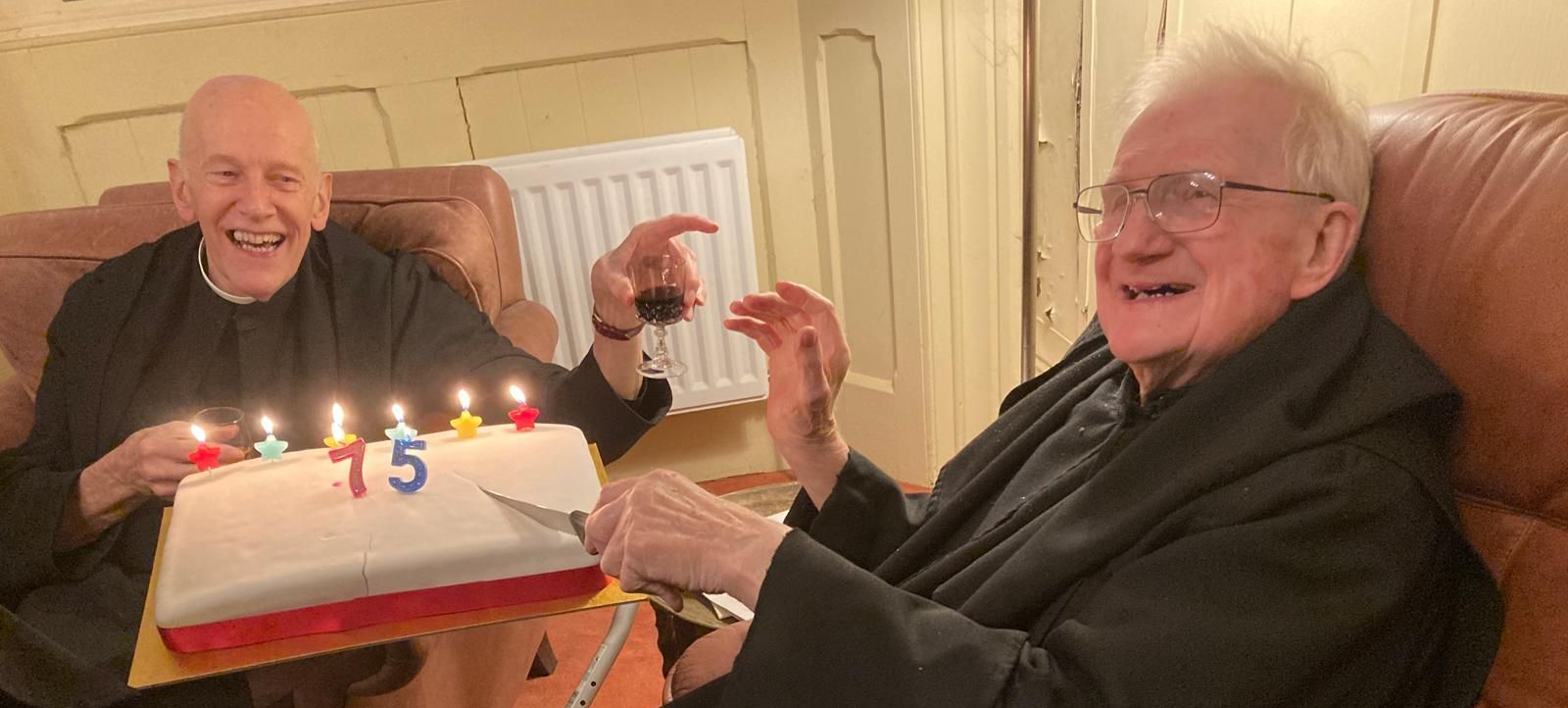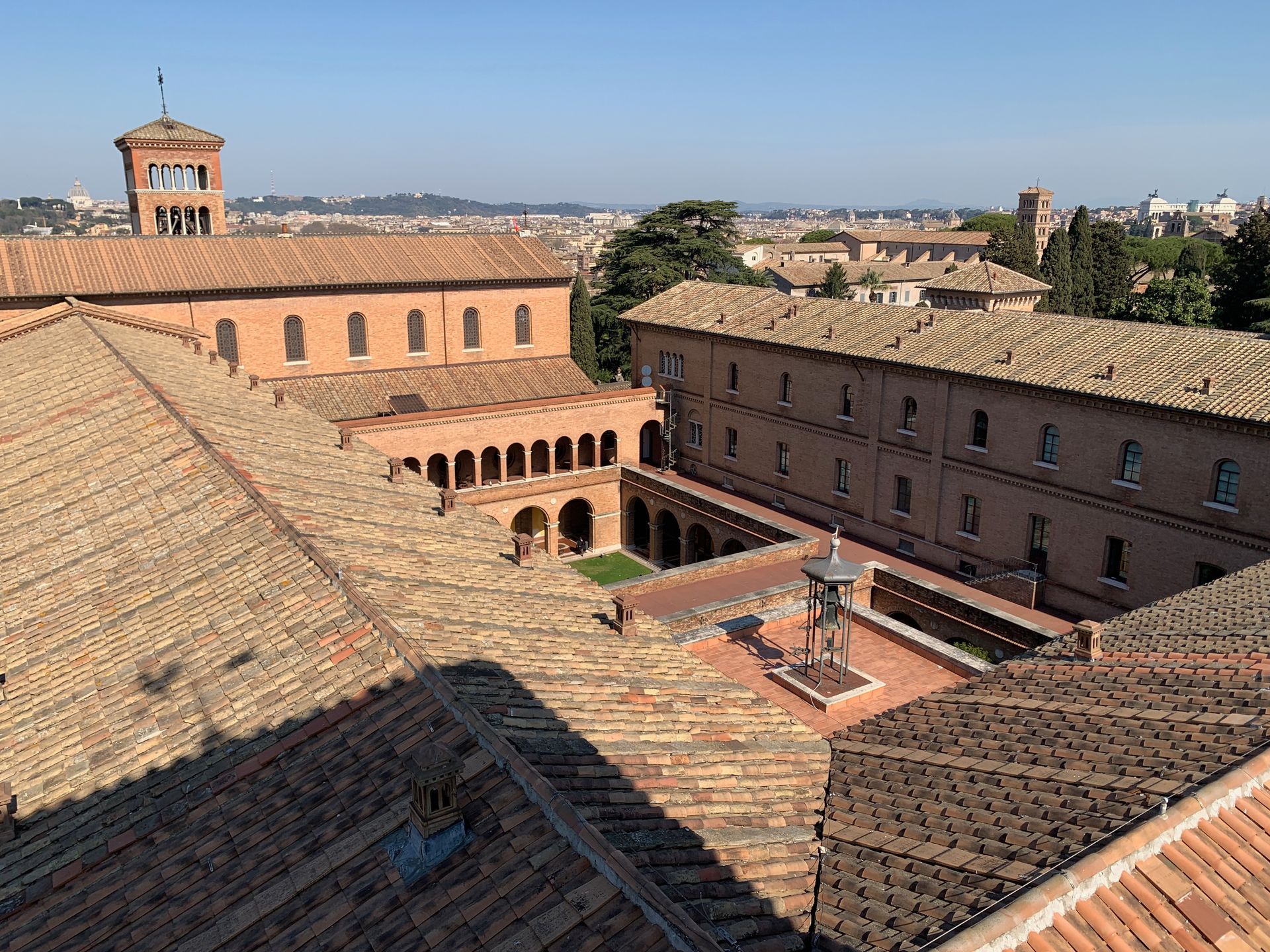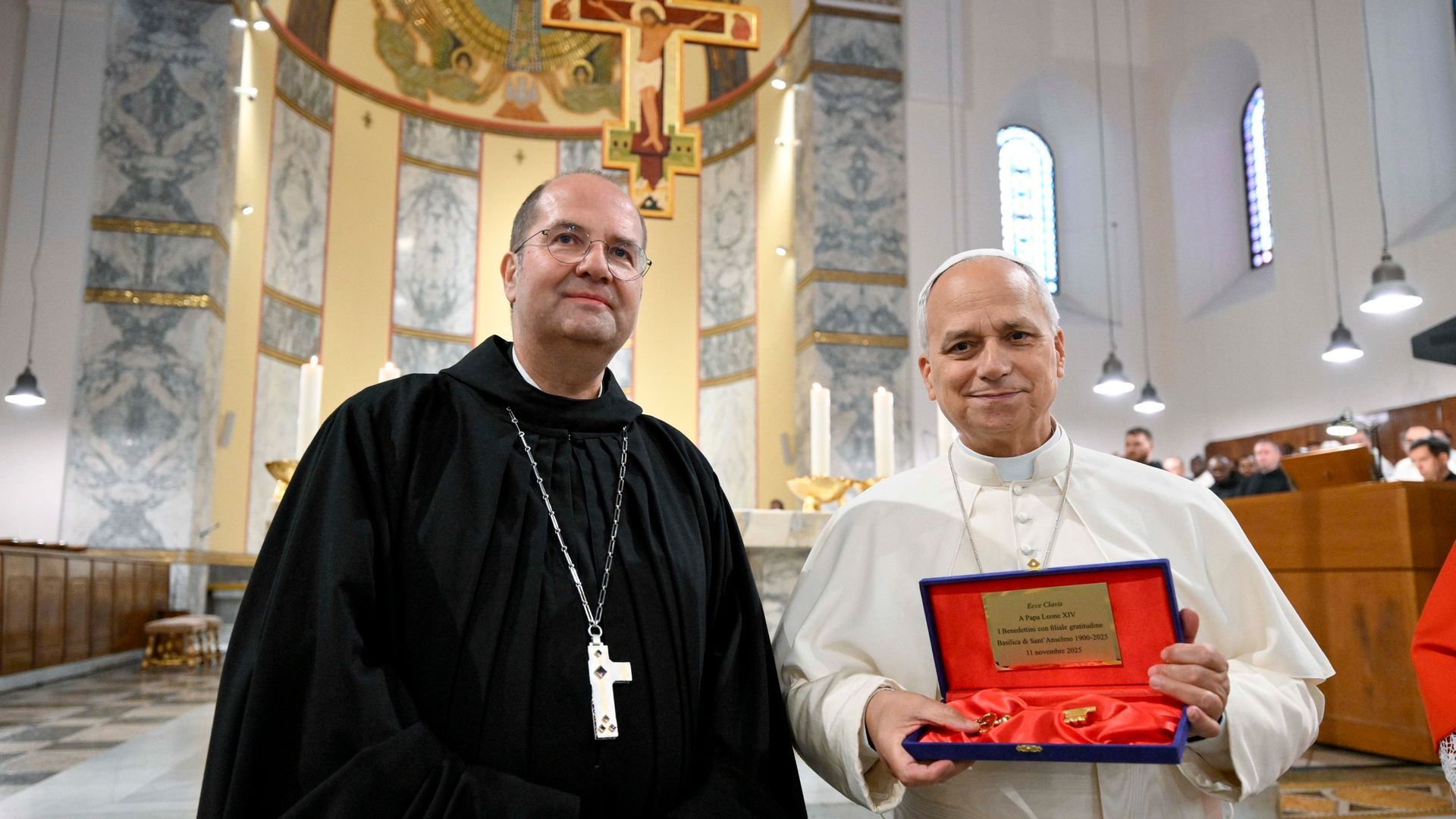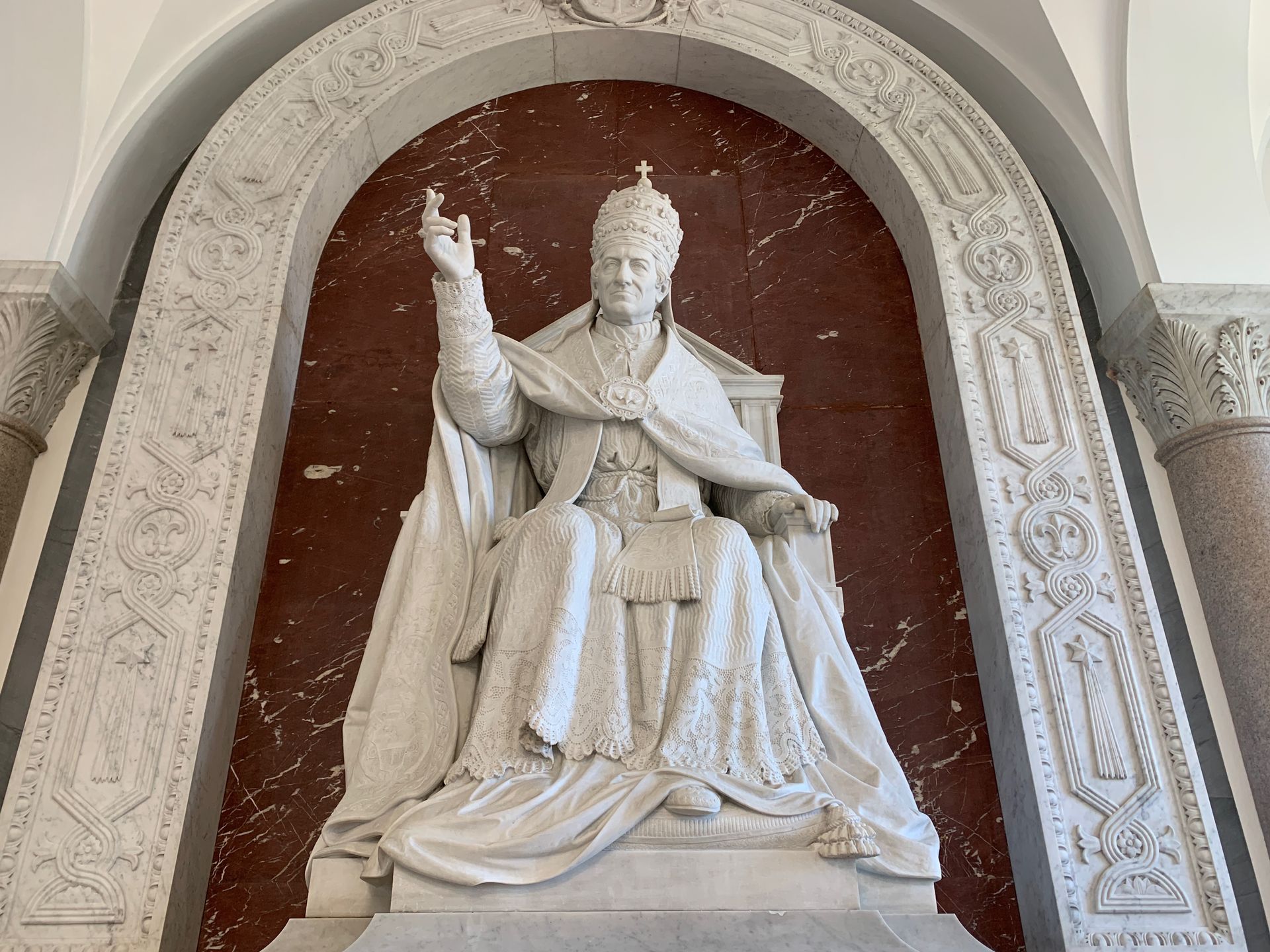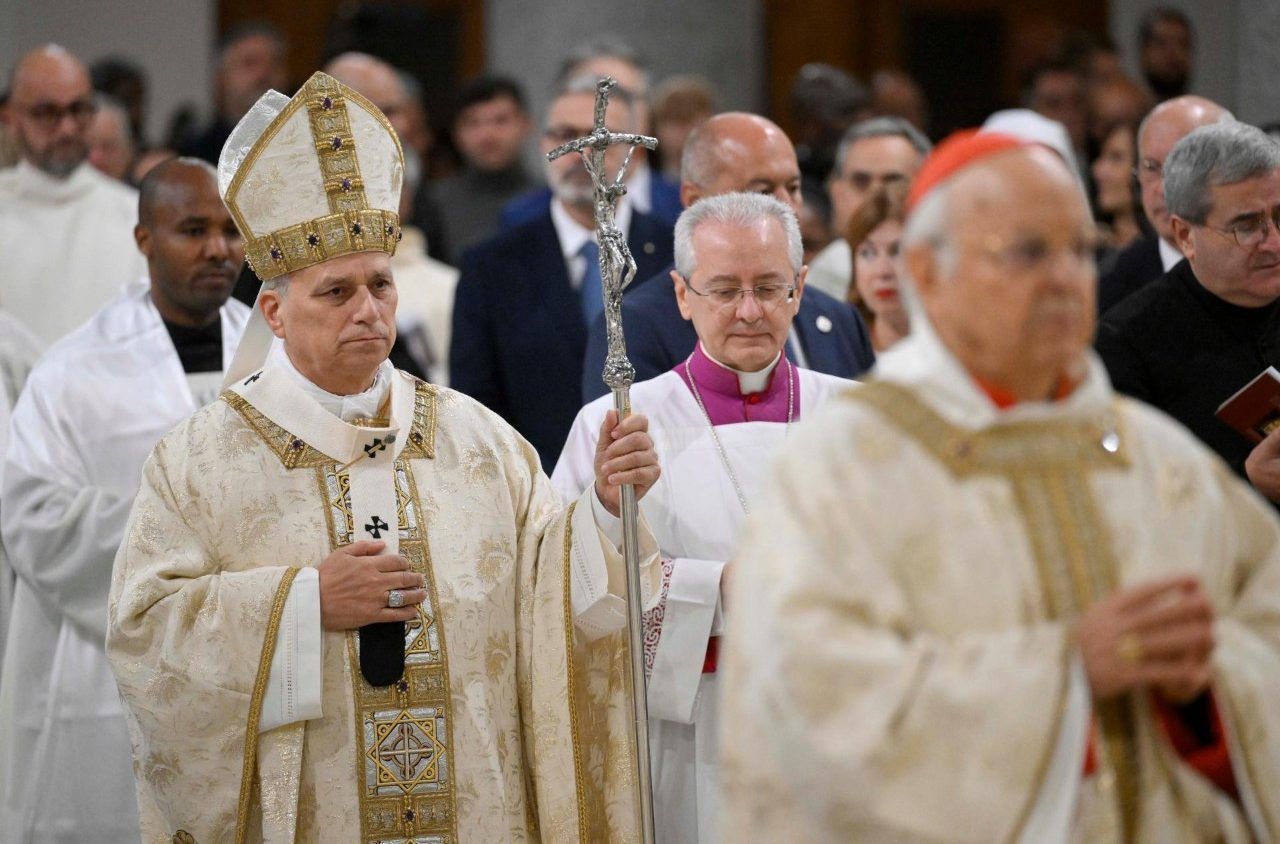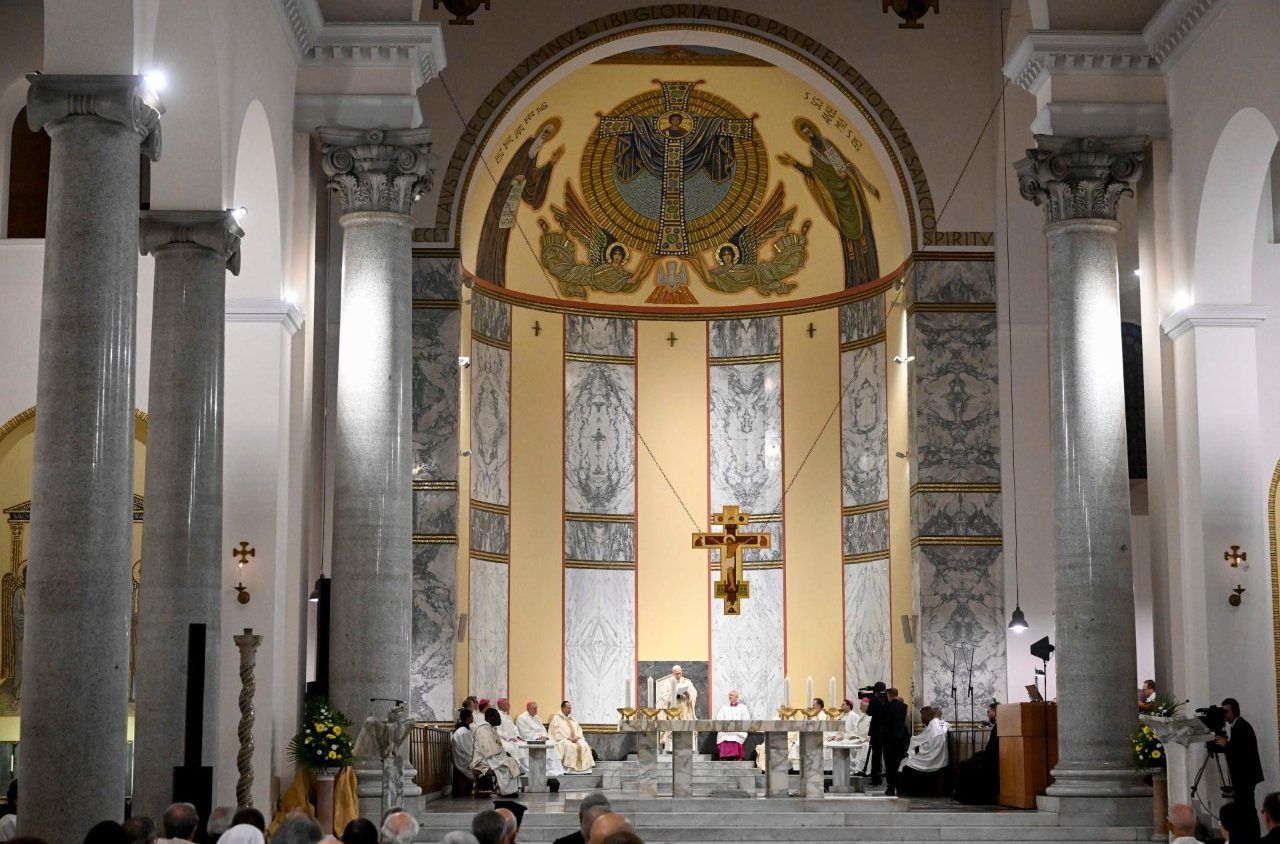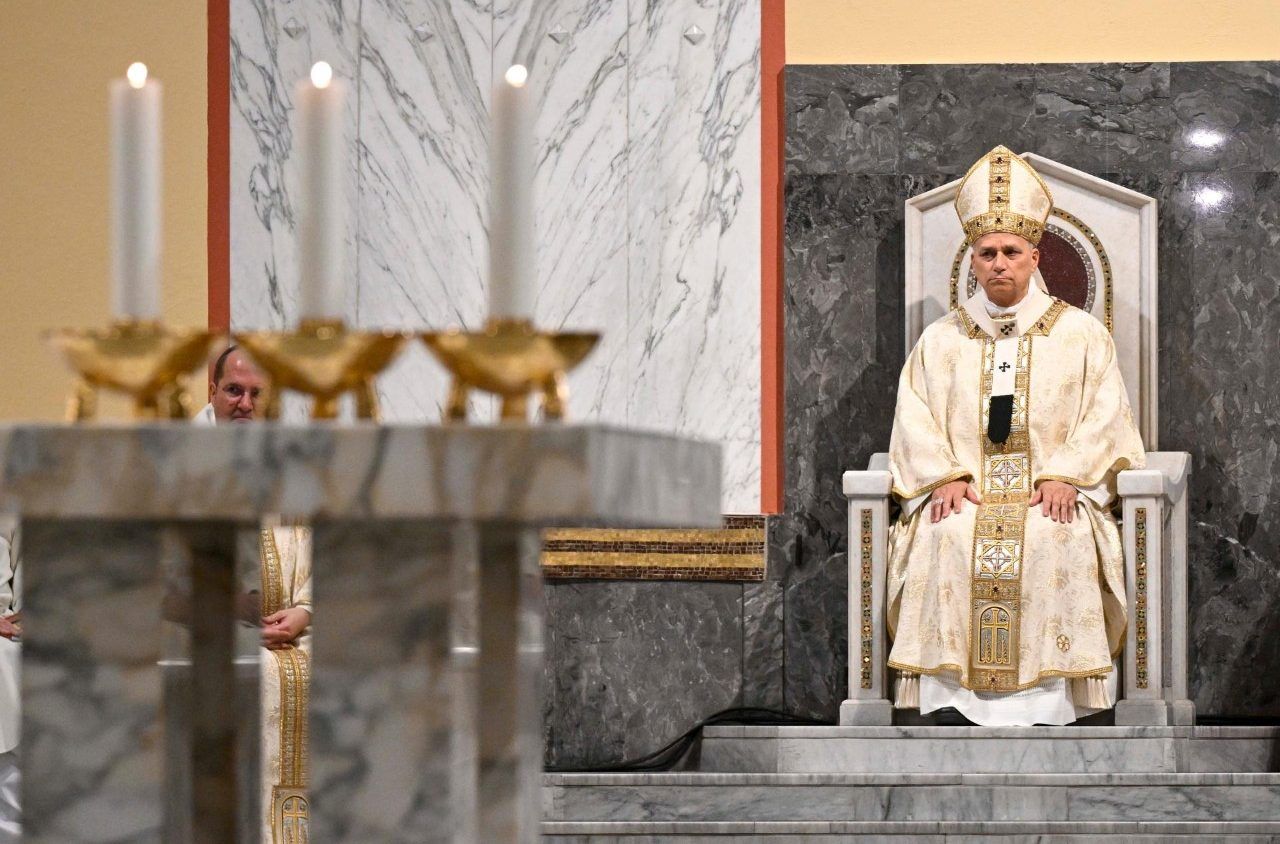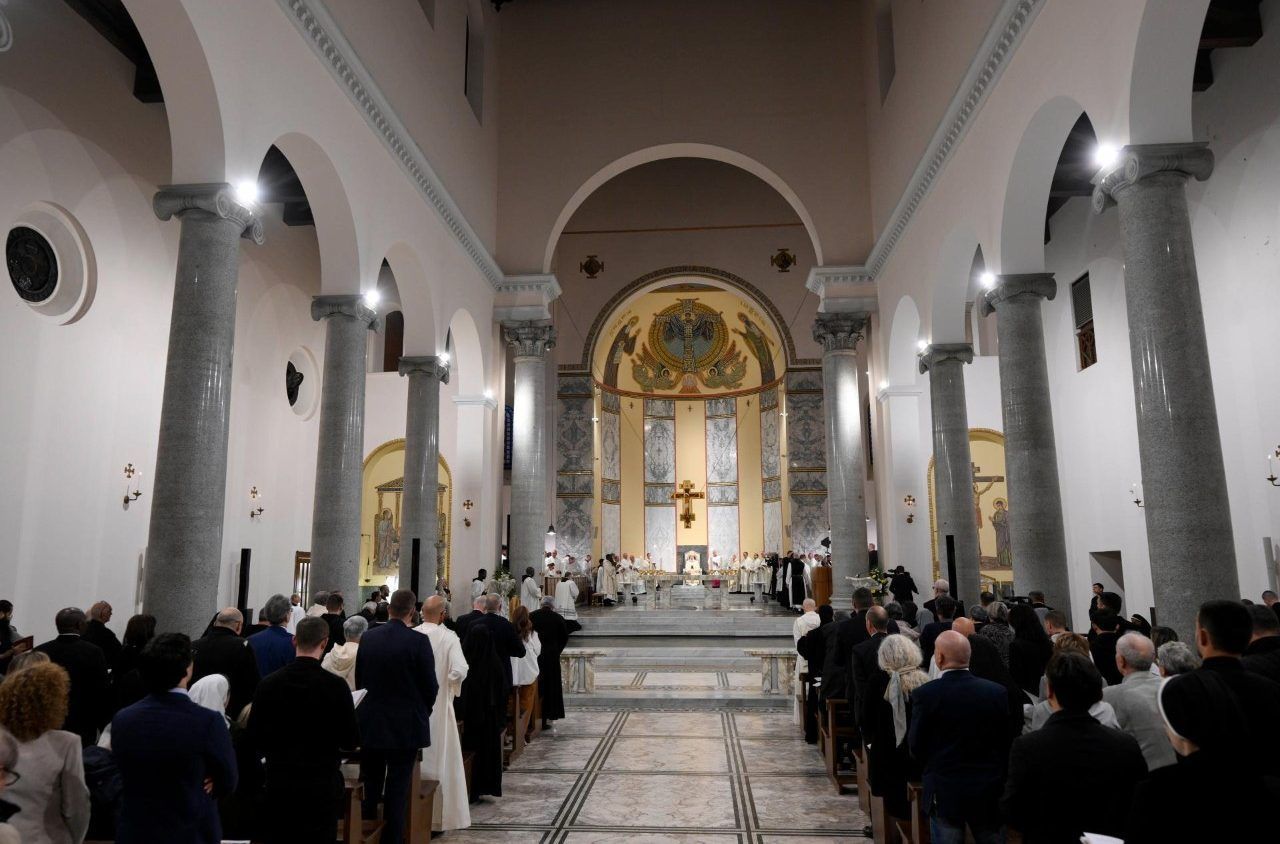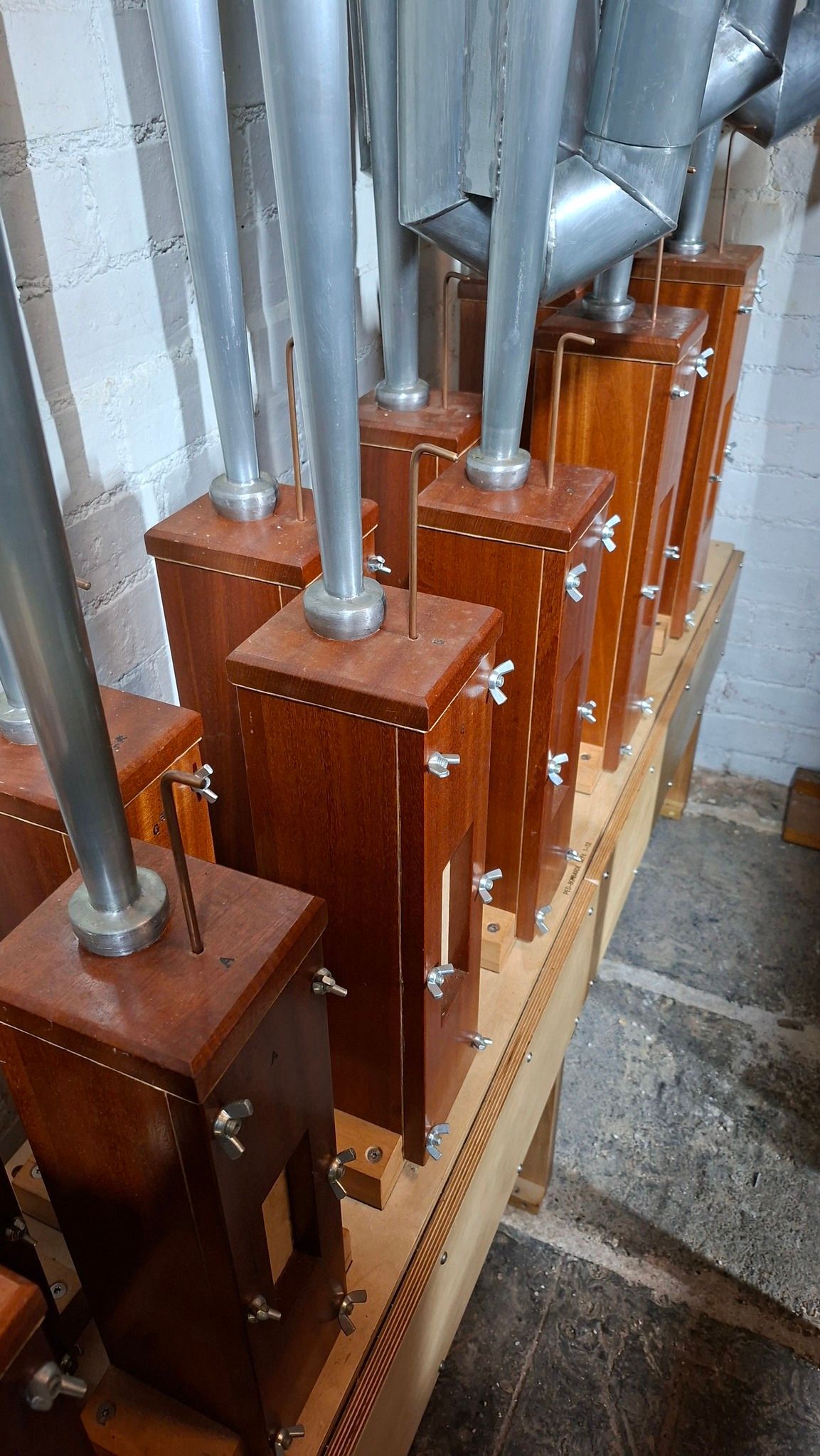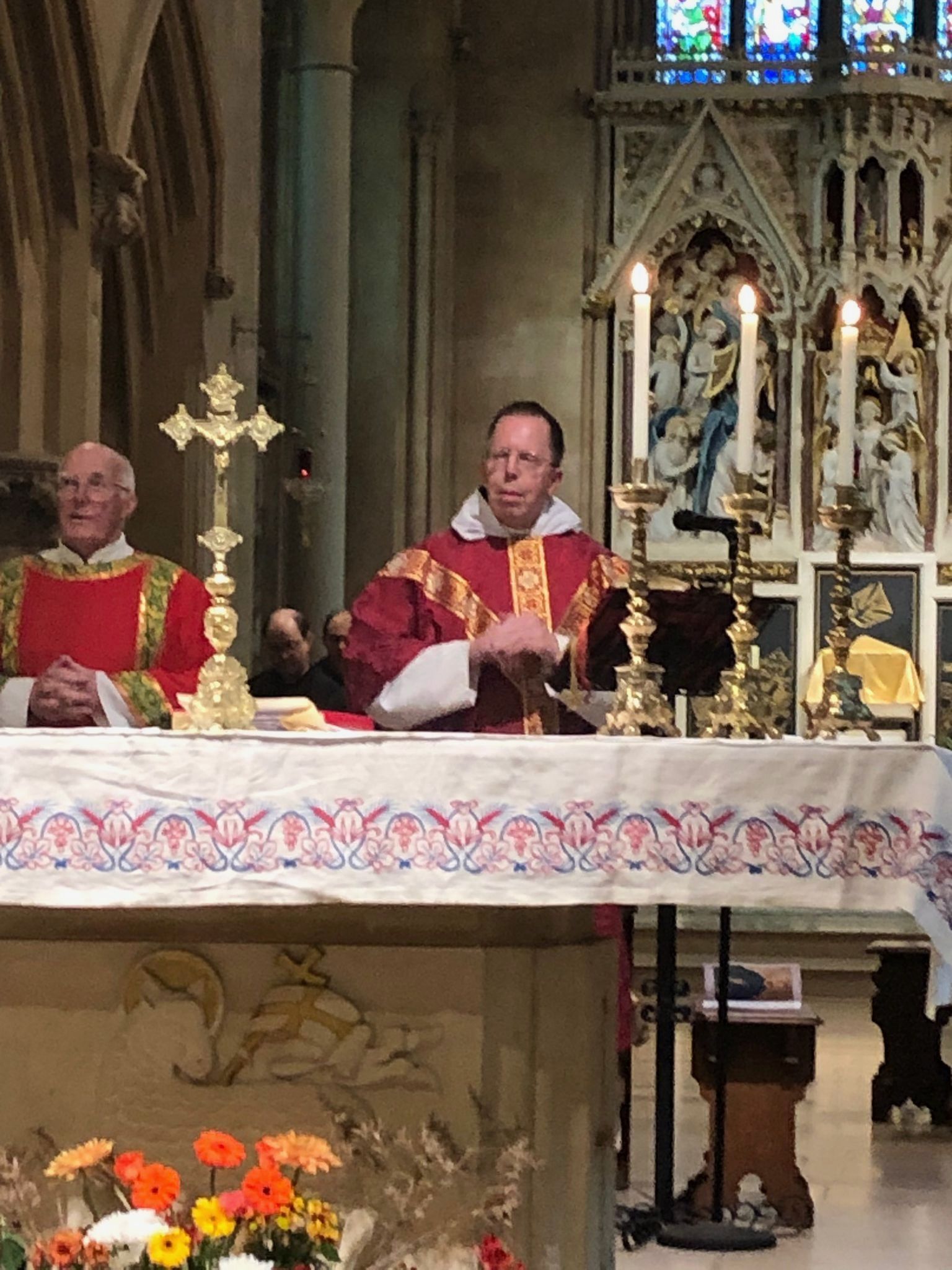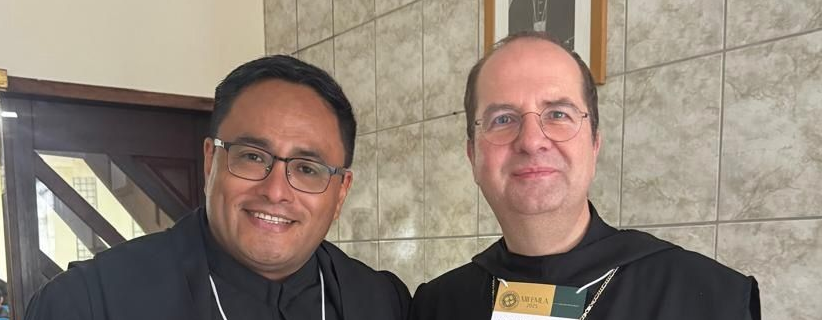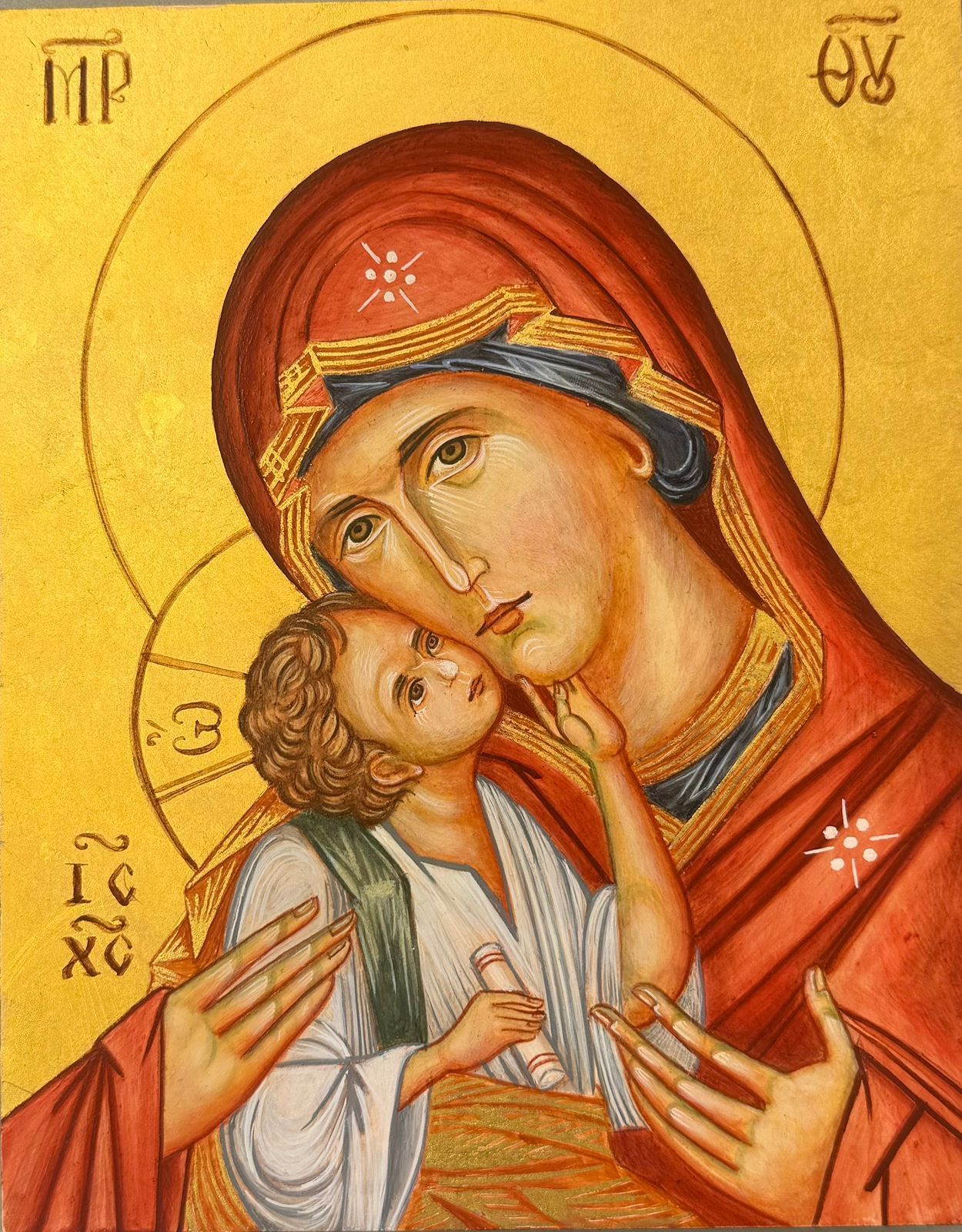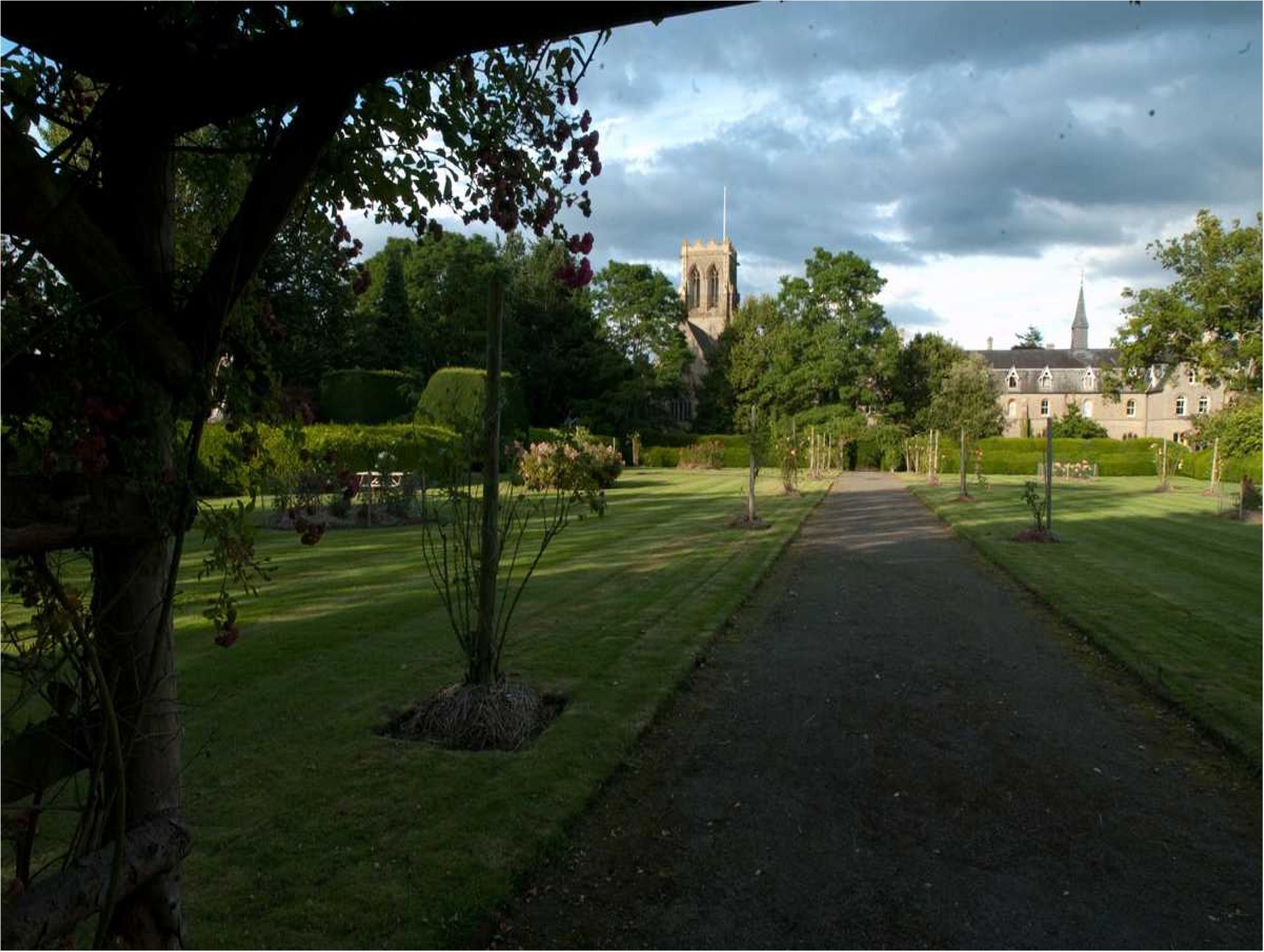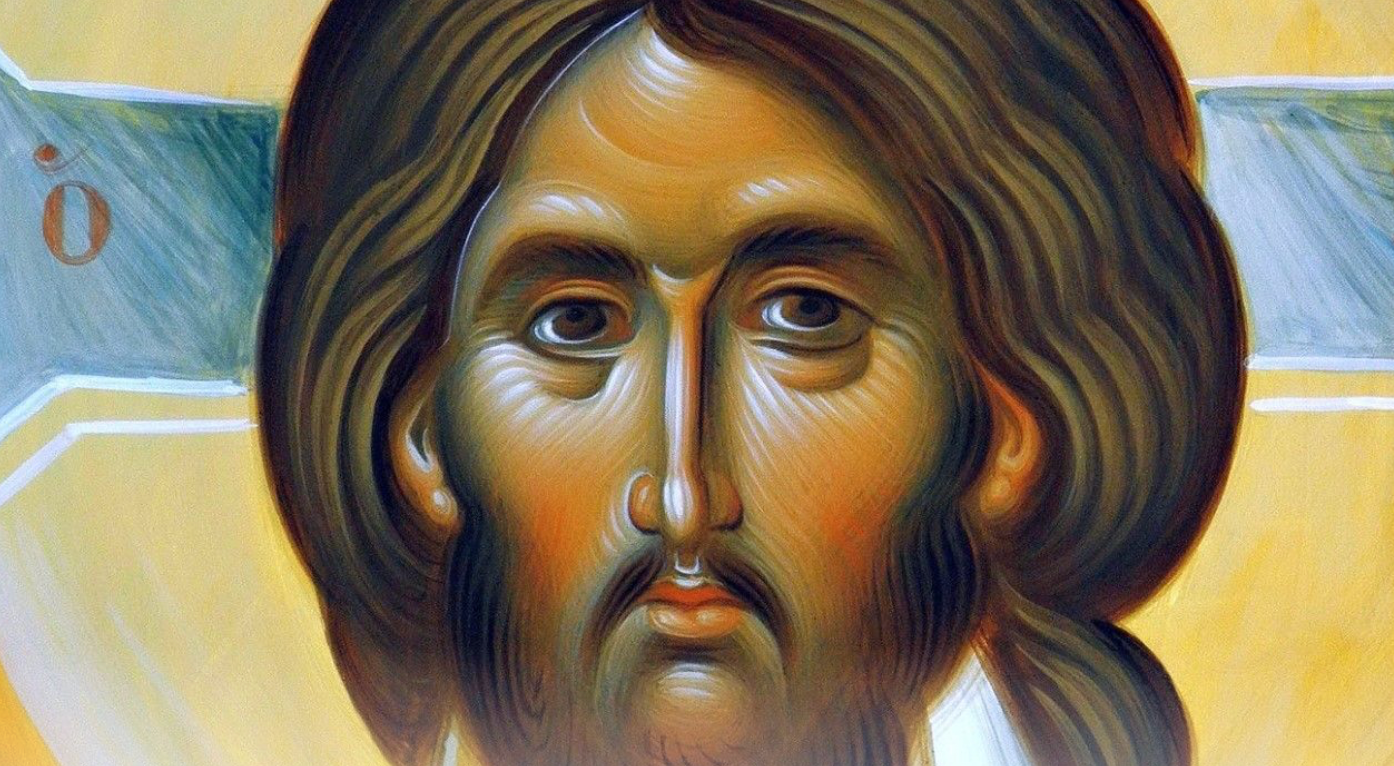Pope Leo visits the Benedictine Headquarters
Abbot Brendan Reflects on Pope Leo's words to the Benedictines worldwide
Photos: Abbot Jeremias Schroder, Abbot Primate presents Pope Leo with the keys to Sant' Anselmo; Sant Anselmo on the Aventine, and the statue of Pope Leo XIII in the Sacristy of Sant' Anselmo.
At Sant’ Anselmo there is a large statue of Pope Leo XIII in the sacristy, rightly honoured as its founder and great supporter. In establishing the office of the Abbot Primate and the Benedictine Confederation, he envisioned Sant’ Anselmo not only as a house of prayer, study, and formation, but also as a bridge to the Eastern Churches. His project of unity among the Benedictine Congregations was in order to strengthen the Benedictine mission in the world.
This was highlighted by Pope Leo XIV during his homily for the 125th anniversary of the dedication of the Basilica of Sant’ Anselmo. Like his predecessor of the same name, he believes that Benedictines possess a gift that the Church and the world urgently need.
Pope Leo’s words were not nostalgic but missionary. What struck me most was his description of monasticism as a “frontier reality.” To quote from his homily:
“Monasticism has been a ‘frontier’ reality since its origins, prompting courageous men and women to establish centres of prayer, work and charity in the most remote and inaccessible places, often transforming desolate areas into fertile and rich lands, from an agricultural and economic point of view, but above all from a spiritual point of view. Thus, the monastery has increasingly characterized itself as a place of growth, peace, hospitality and unity, even in the darkest periods of history.”
These words offer us a lens through which to reflect on our own mission and vocation here at Belmont. The “frontier” is no longer primarily geographical; it is spiritual, cultural, human, existential. How are we called to be a place of growth, peace, hospitality, and unity? How do we bear witness to these realities?
The first monks were pioneers. They went out into the desert, into wild and desolate places haunted by the darkest forces. Breathing Christ, they tamed the demons, and — as St Athanasius tells us of St Antony and his followers: the desert became a city. Benedict was a pioneer offering a decaying empire schools of the Lord’s service, places of peace, honour, order and charity.
Today we are again in a moment of civilisational upheaval: fragmentation, moral weariness, loneliness, technological dislocation, spiritual confusion. And the Holy Father’s words invite us to stand where our forebears stood — at the frontier.
Where are the “frontiers” now? They are not wastelands or mountains, but: the frontier of meaning, where modern people no longer know what life is for; the frontier of exhaustion, where many are worn out by noise, fragmentation, and overwork; the frontier of loneliness, where hearts long for communion; the frontier of confusion, where truth is hard to name; the frontier of faith, where the Gospel seems implausible to many but needs to be lived to be seen; the frontier of grief, where people carry hidden sorrows; the frontier of seeking, where a a fragile desire for God begins to grow.
We can serve people well — here in the monastery and in our “mission stations,” the parishes — when we offer places where people can bring their questions, their fatigue, their spiritual hunger, and need of silence.
If our Benedictine life is lived well, we will serve the world simply by being what we are called to be: a place of growth, peace, hospitality, and unity. These four words from Pope Leo form a blueprint. They are not abstractions; they can be lived concretely and daily.
- We will be a place of growth if each of us perseveres in prayer, reflection, and the pursuit of spiritual maturity in truth and love. For Benedict, growth is seen in the ‘expanded heart’ – progress of life and faith that comes with patience, obedience, gentleness, humility (RB Prologue 49).
- We will be a place of peace if we “put nothing before the love of Christ,” allowing him to be our peace and our unity. This means focusing on what truly matters, not on the trivialities that sometimes divide us. When our community is stable, charitable, reconciled, and joyful, we offer peace to others simply by existing. “Let peace be your quest and aim” (RB Prologue 17).
- We will be a place of hospitality when we open not only our doors but our hearts to those who come. When welcome comes with a smile: “with all the courtesy of love” (RB 53:3).
- We will be a place of unity when, in our mix of personalities, backgrounds and weaknesses, we bear one another’s burdens, forgive and ask forgiveness, and live in charity. “How good and how pleasant it is when brothers live in unity.” (Psalm 132).
Pope Leo insisted that we can meet the challenges of our age only by placing Christ at the centre of our existence and mission. Monastic life is evangelical only when it is Christ-centered. Our mission is not strategies, projects, or activism; it is Christ shining through a community that seeks God, prays faithfully, and lives the Gospel without fuss.
“We are called to seek him and to bring to him all those we encounter”, said Pope Leo, concluding his homily. He imagines Sant’ Anselmo as a “beating heart” for the Benedictine world — a source from which life flows. But every monastery is meant to be such a heart, pumping lifeblood into the body…into the church, into our world.
Photos © Vatican Media
